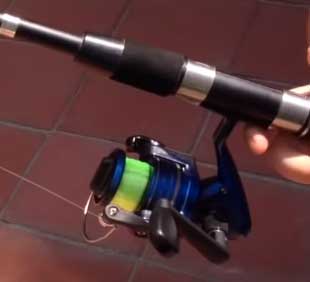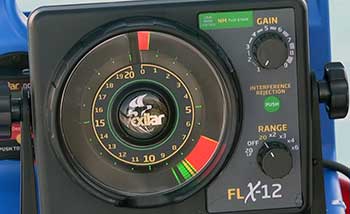Fishing isn’t just about being patient and waiting for the fish to bite. It’s about using the right gear for the right situation, which often means choosing the right kind of fishing reel.
Two popular types of fishing reels that often create confusion among anglers are baitcasting and open face reels. This article will dive deep into the baitcaster and open face reel debate and help you understand which reel might be the right fit for your fishing adventures.
A Comprehensive Comparison Table
| Feature | Baitcaster Reels | Open Face Reels |
| Design and Configuration | Positioned on top of the rod with a revolving spool. | Mounted underneath the rod with a fixed spool. |
| Casting Mechanism | Requires control over the spool’s speed during casting, providing more precision but at the cost of a steep learning curve. | Simple to use, just open the bail, hold the line, swing the rod, and release. |
| Line Capacity and Strength | Higher line capacity and can handle heavier lines, suitable for targeting bigger species. | Better suited for lighter lines and lures, offering wide compatibility but may struggle with heavier lines. |
| Ease of Use | Requires more skill and practice to use effectively. | More straightforward to use, beginner-friendly, with less risk of line tangling. |
| Suitable For | Experienced anglers, precision casting, big water fishing, larger species. | Beginners and experienced anglers, a variety of fishing situations, both saltwater and freshwater fishing. |
Baitcaster Reels: Precision and Control

Baitcasting reels, sometimes referred to as “baitcasters,” have gained a reputation among seasoned anglers for their precision and control. They sit on top of the rod and use a revolving spool for casting. They have a special place in the fishing world, especially for those targeting larger fish species.
Pros of Baitcasting Reels
- Superior Casting Control
With a baitcaster, you have unparalleled control over casting distance and accuracy. The revolving spool allows for fine-tuned adjustments mid-cast, offering you a level of precision that is hard to match with other reel types.
- High Line Capacity
Baitcasters generally have a larger line capacity, making them ideal for big water fishing or when you’re targeting species that make long runs.
- Power and Torque
The design of baitcasting reels lends them a superior cranking power, which is crucial when you’re battling heavy and strong fish.
Cons of Baitcasting Reels
- Learning Curve
One of the main drawbacks of baitcasters is their steep learning curve. They require more skill to cast accurately without causing a backlash or “bird’s nest.”
- Cost
Typically, baitcasting reels are more expensive than other reel types, including open face reels.
Also Read: Differences Between Cortland Master Braid And PowerPro Lines.
Open Face Reels: User-friendly and Versatile
Open face reels, also known as spinning reels, are favorites among beginners and experienced anglers alike due to their ease of use and versatility. They are mounted underneath the rod and use a fixed spool mechanism for casting.
Pros of Open Face Reels

- Easy to Use
Spinning reels are straightforward to use, even for beginners. There’s less risk of line tangles, making the overall fishing experience more enjoyable.
- Versatile
Open face reels are incredibly versatile. They can handle a wide range of fishing situations and are suitable for both freshwater and saltwater fishing.
- Cost-Effective
Generally, spinning reels are less expensive than baitcasters, making them a budget-friendly option for many anglers.
Cons of Open Face Reels
- Less Casting Control
Compared to baitcasting reels, spinning reels offer less control over the casting distance and precision.
- Limited Cranking Power
Open face reels have less cranking power, making them less suitable for catching larger, stronger fish.
Key Differences Between Baitcaster And Open Face Reels
To dive deeper into this reel debate, let’s identify and discuss their key differences in detail.
- Design and Configuration
One of the first noticeable differences between baitcasting and open face reels is their design and how they’re mounted on the rod.
A baitcasting reel is positioned on top of the fishing rod. It is designed with a revolving spool mechanism. Its ‘over the top’ setup facilitates a direct line from the rod to your hands, providing more power and control.
On the other hand, an open face reel, also known as a spinning reel, is mounted underneath the rod. It features a fixed spool, meaning the spool itself does not rotate during casting or retrieval.
- Casting Mechanism
Baitcasting and open face reels differ significantly in their casting mechanisms.
A baitcasting reel requires you to control the speed of the spool with your thumb to prevent a backlash (also known as a bird’s nest). The degree of control it offers during casting makes it popular among experienced anglers targeting precision.
However, this also means that baitcasting reels come with a steep learning curve for beginners.
Open face reels, on the other hand, offer a simpler casting mechanism. You open the bail, hold the line with your finger, swing your rod, and release the line. The simplicity of this process makes open face reels more beginner-friendly.
- Line Capacity and Strength
When it comes to line capacity and strength, baitcasters generally come out on top. They can handle heavier lines and have a larger line capacity, making them suitable for targeting bigger, stronger species and for long-distance casting.
Open face reels are generally better suited for lighter lines and lighter lures. They offer a wide range of line size compatibility but might not perform as well as baitcasters when it comes to heavier lines.
- Ease of Use
Open face reels typically win in the ‘ease of use’ category. They are beginner-friendly, with a lower risk of line tangling, making them an excellent choice for those new to fishing or those who prefer a more straightforward experience.
In contrast, baitcasting reels require more skill and practice to use effectively, mainly because of the casting control they offer. Although this steep learning curve might be a challenge for beginners, many experienced anglers appreciate the precision and control baitcasters provide.
Also Read: Comparison of Fuji And Alps Reel Seats.
Frequently Asked Questions (FAQ)
It isn’t accurate to declare one as universally better than the other. The choice between baitcasters and open face reels depends on your fishing style, skill level, targeted species, and personal preference.
Open face reels are easy to use, versatile, and more affordable than baitcasting reels. They are excellent for various fishing situations, including saltwater and freshwater fishing.
Baitcasting reels offer superior casting control, a higher line capacity, and greater cranking power, making them ideal for targeting larger fish species.
No, a baitcaster is not an open face reel. The primary differences lie in their design and functionality. Baitcasting reels sit on top of the rod with a revolving spool while open face (spinning) reels are mounted underneath the rod with a fixed spool.
Final Thoughts
In conclusion, both baitcaster and open face reels have their unique strengths and weaknesses. The choice between the two ultimately depends on your personal needs and fishing style. Happy fishing!

